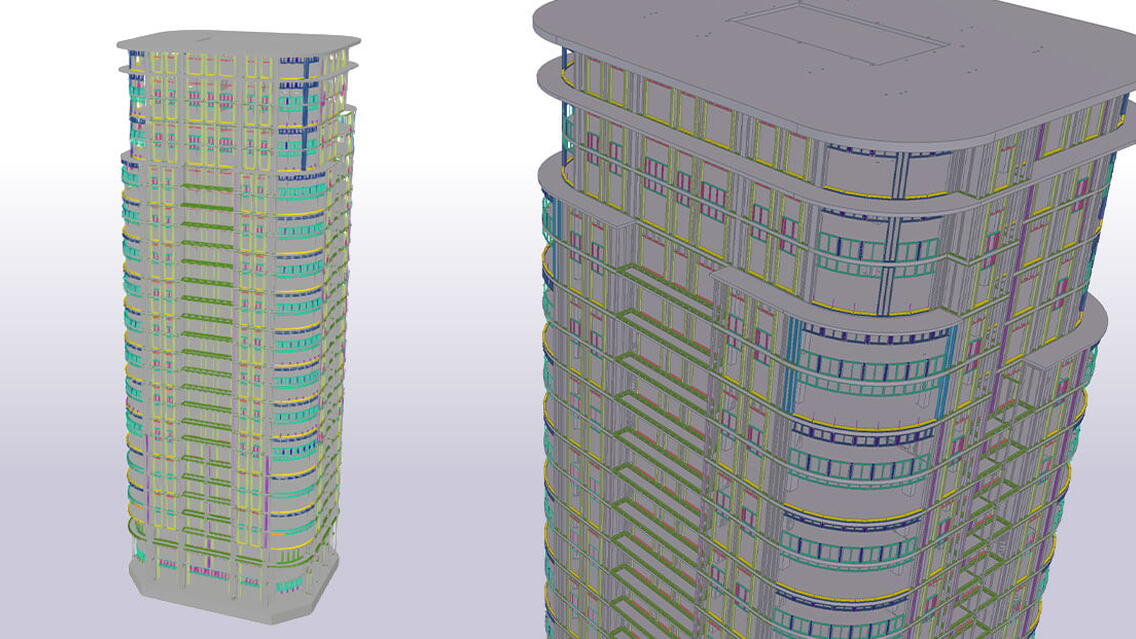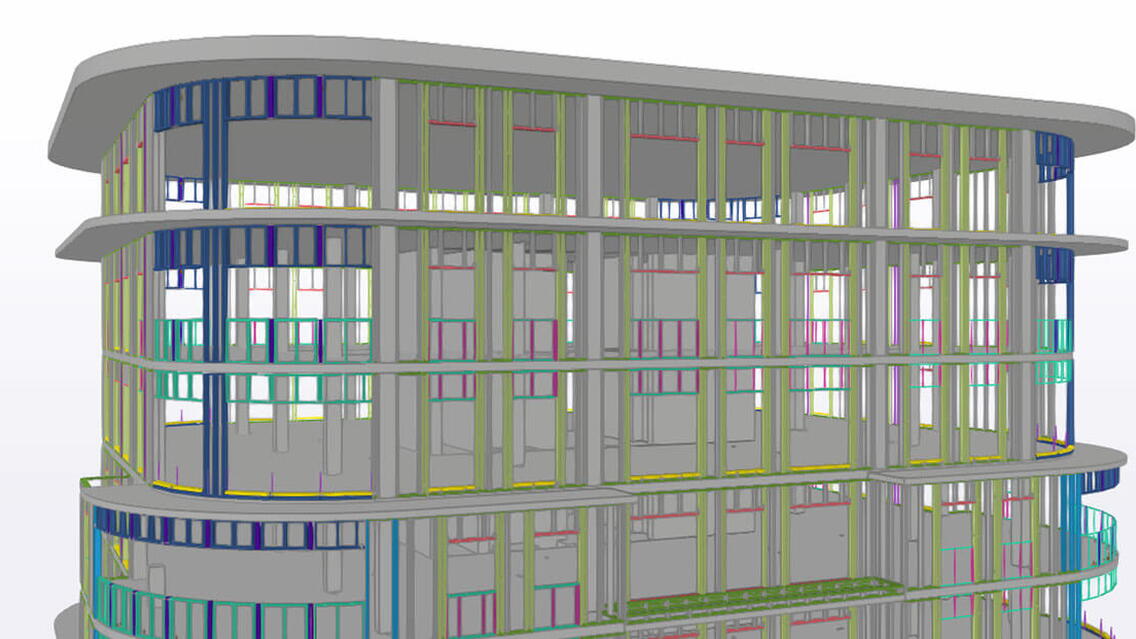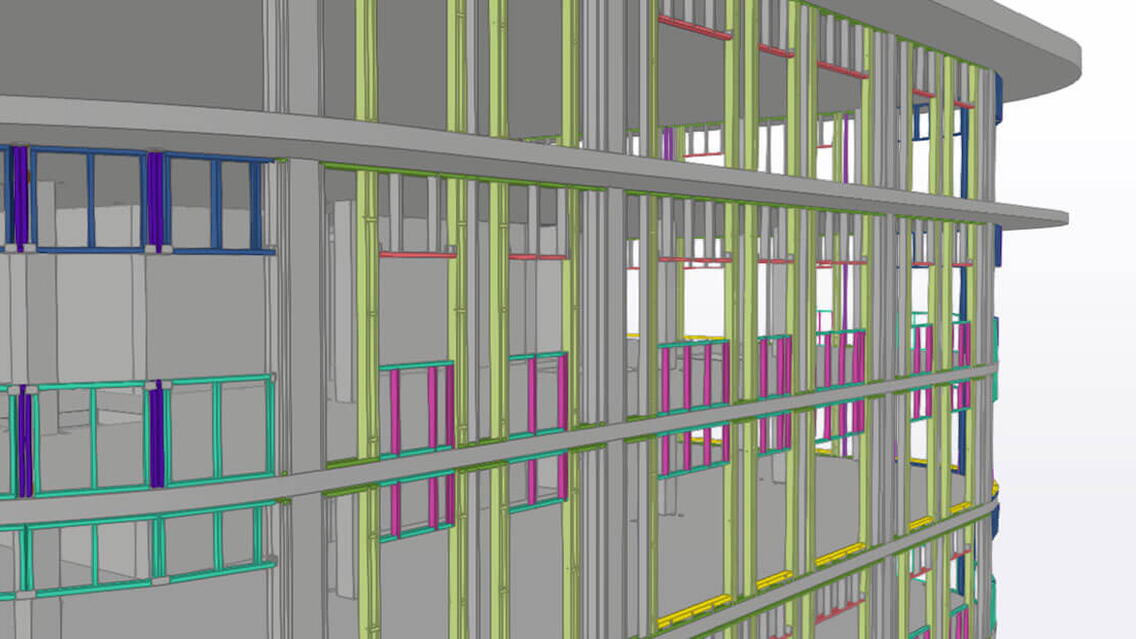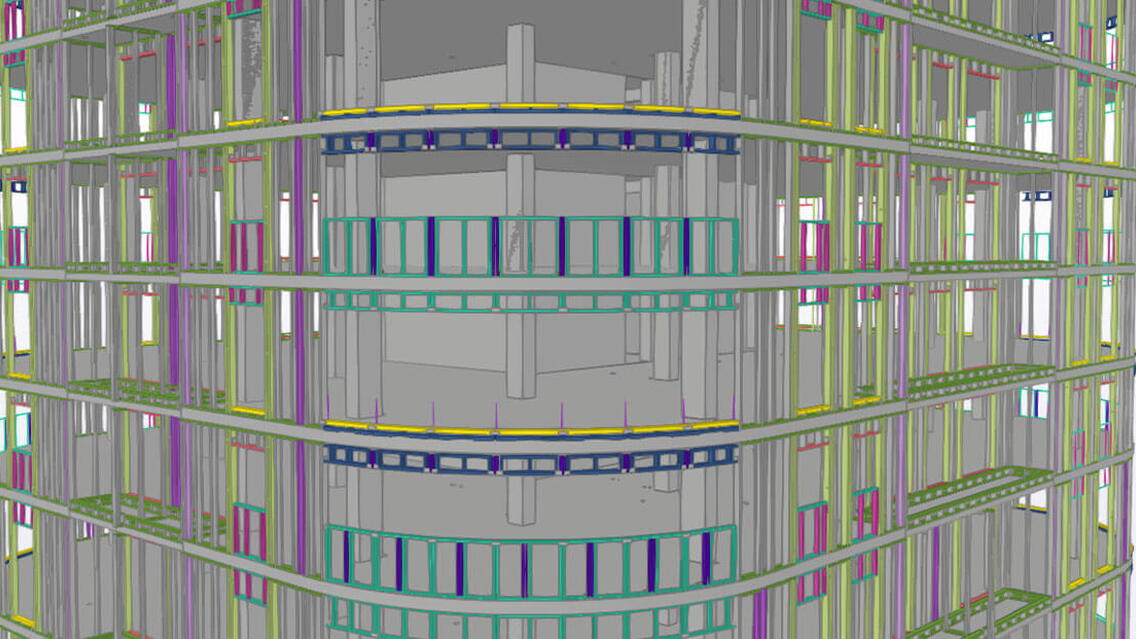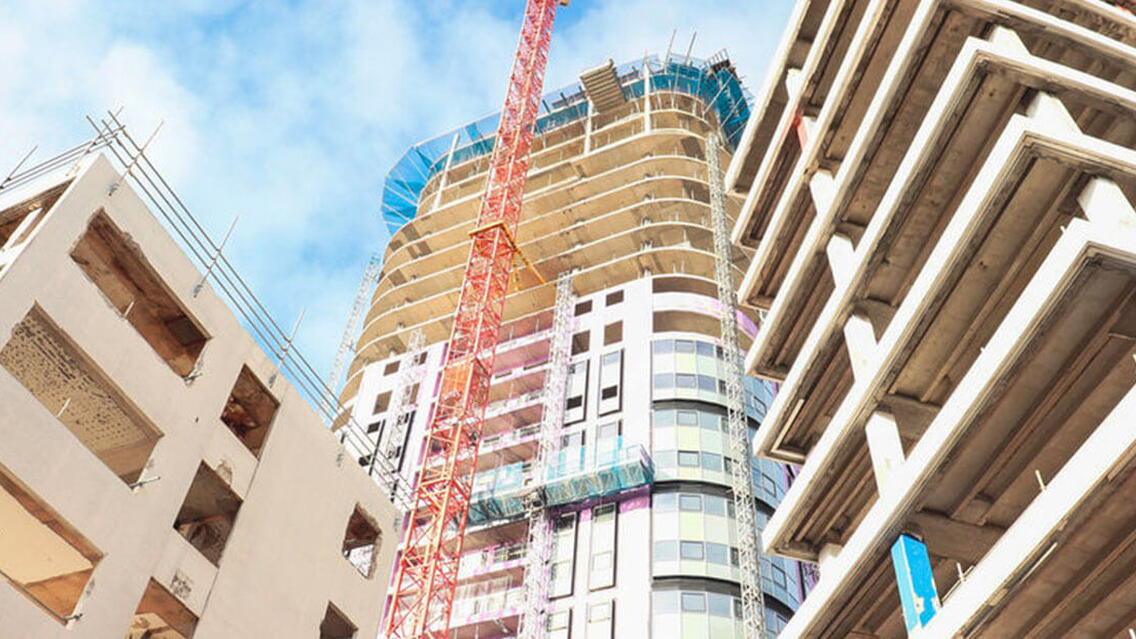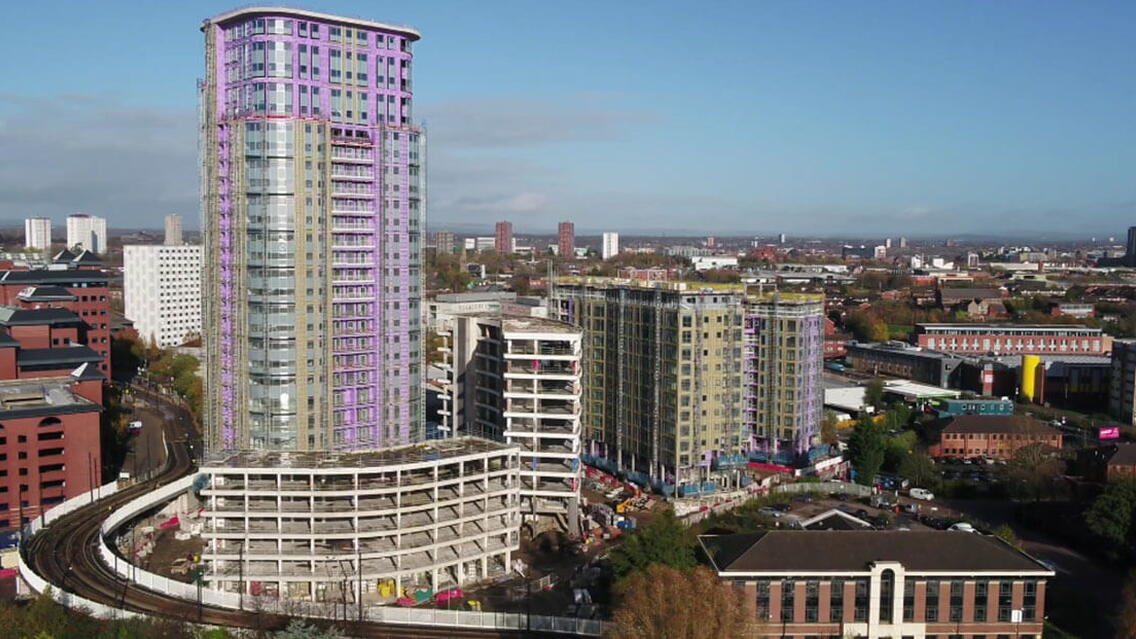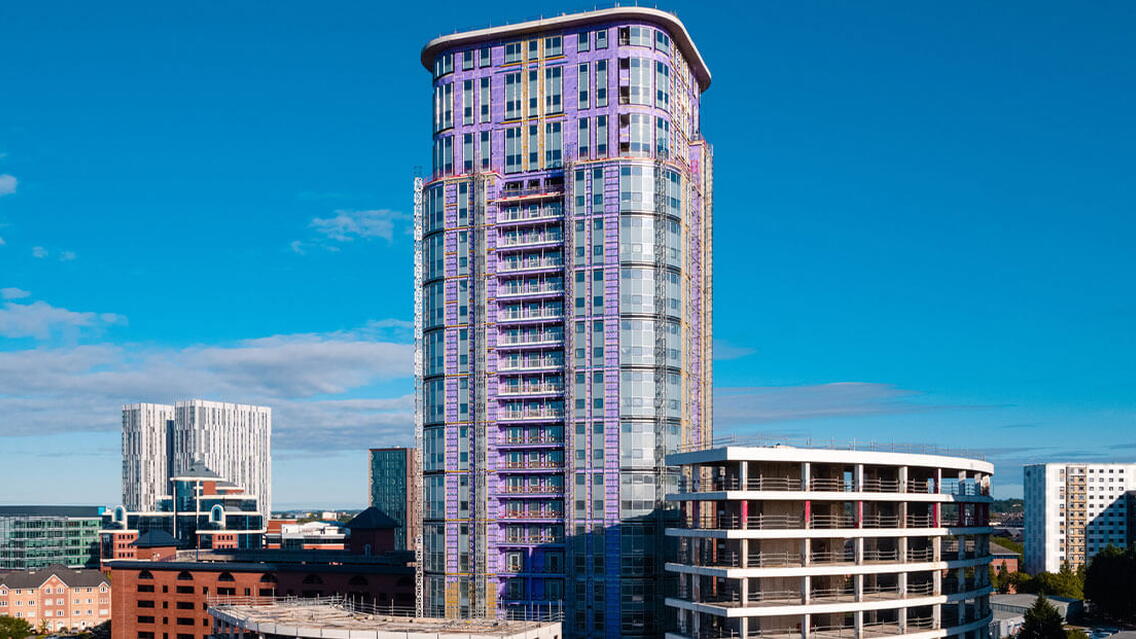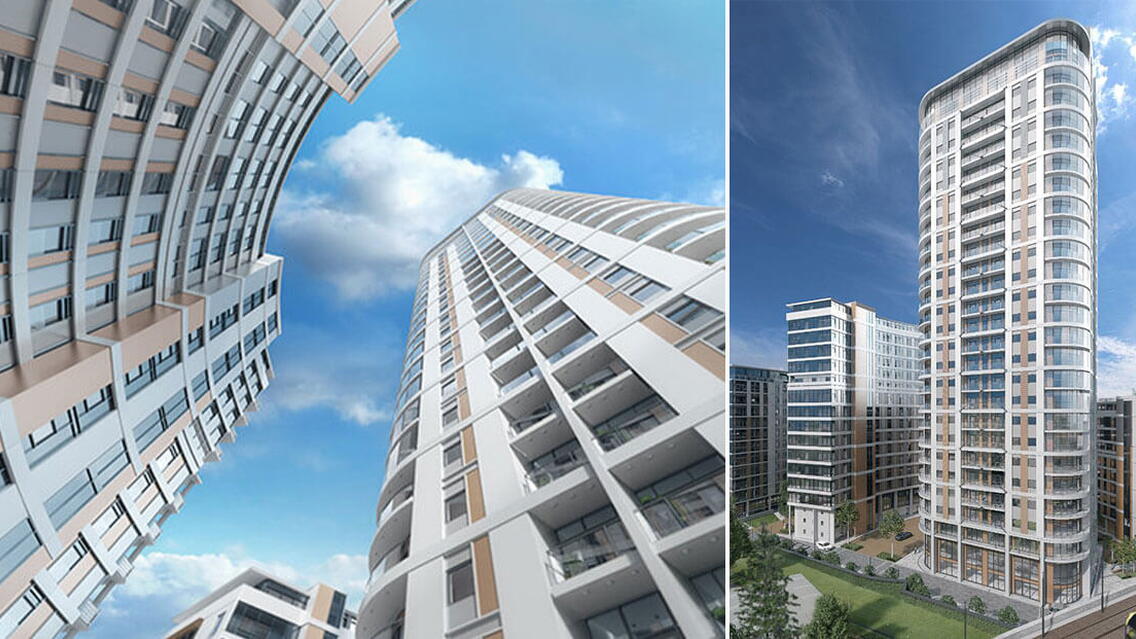We were tasked with designing and supplying the external walls of this modern apartment complex using both stud and track infill as well as pre-assembled panels which would then be used for the four curved corners of the building. This development is in partnership with JLS and Beaumont Morgan and is for a 27-storey apartment block located in Manchester.
What were the challenges and made the project successful?
One of the initial challenges early on was knowing how to deal with an inconstant slab level on the curved corners. The install team wanted pre-assembled panels for ease and speed of installation.
The solution to this was to provide pre-assembled panels with a deflection top track, this allowed for some adjustments on site. We had to work closely with the site engineer who provided surveyed dims around the curves.
The panels had to be of a size where they were manageable enough to handle and install and still give the required curved look.
What were the challenges and what made the project successful?
Using Tekla from project inception to create the structure was highly beneficial when it came to delivering accurate models and meeting the client’s brief:
- By importing reference models, the margin for error was reduced. This allowed the design process to flow more easily and ensure the client’s expectations were met with fewer revisions to the design.
- Having the ability to create IFC models enabled quick and easy sharing with the necessary people. This was beneficial as it kept all parties up to date with the current model, enabling effective clash detection and collaboration on any queries or design developments.
- Being able to import the primary structure (concrete IFC model) was key to being able to accurately design all the elements of the project. Without it, the design time would have been exponentially longer, although we also had to work from site surveys on the curves.
- Due to the size of this project, it was important to have confidence that the tools used could cope and manage with the large volume of data – the use of Tekla was key to gaining this confidence. Furthermore, having an element of repetition between floor levels, Tekla enabled us to store and re-use commonly used components saving time throughout the design process.
- Due to the addition of part marks, it was easy to show the site install team where each of our pre-assembled panels were located, as each panel had differing dimensions so without this feature it would have been a lot more difficult to communicate each frame location.
The use of Tekla as bespoke 3D modelling software and BIM, married with the use of a bespoke CAD/CAM interface to our roll forming machines, allowed the fully detailed design to be exported straight from design to manufacture. The pre-engineered solution was designed, manufactured and assembled on-site with confidence, creating a highly impressive building that exceeded the project expectations of both the client and main contractor.
The project in numbers
The project in total was made up of 37156.133 linear metres of steel in varying gauges (15012/15016/10016/1506520) weighing 94245.7kg and in total from GF to 27F the structure stands at 89m tall.

